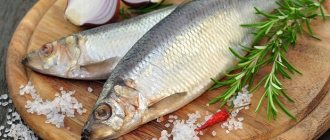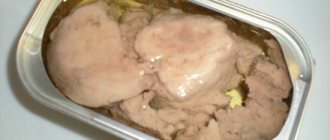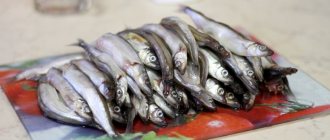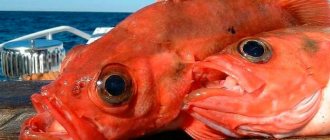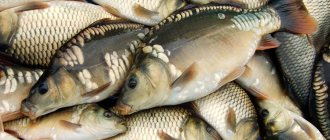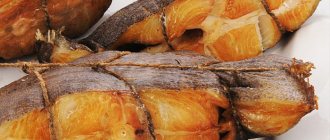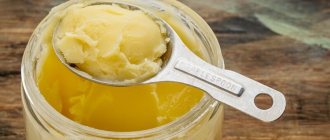This is a product loved by many gourmets around the world. Widely used in European and Asian cuisines. In Rus', this product has been used since ancient times, which was served to kings and nobles. Ordinary people regularly consumed the product, since fishing made it possible to supply such a delicacy to the homes of ordinary poor people. The delicacy is most respected in Japan.
It is impossible to imagine classic Japanese cuisine without small, crispy caviar. The most common product on the European market is salted herring caviar . The eggs are freed from the eggs, salted with the addition of oil, spices and marinade. Snacks in the form of sandwiches and snack pastes are prepared from this product. Yastykov caviar is fried, marinated, and salted.
Types of herring caviar
The product is divided into several types. The most common variety among Europeans is punched salted herring caviar. To prepare it, you need to remove the eggs from the film, which is called the egg. Then it is marinated, salted in oil or spices. This type is used to prepare various pastes for snacks. It is mixed with eggs, soft cheeses, and butter.
Caviar is also used in eggs. The Japanese especially value this product. It is cooked in batter, marinated in soy sauce with spices and sweet rice wine. It is also added to traditional Japanese dishes such as sushi and nigiri.
This is interesting! The most common and beloved in the Land of the Rising Sun is caviar, salted together with algae. This delicacy is called Kazunoko-Kombu. The dish is present on the menu of both large restaurants and small eateries; it is characterized by an expressive, unique taste and crispy texture.
Use in cooking
Herring acquires its taste after processing. The most popular method is weak salting, during which the fish matures. As a result, the meat softens and a so-called “herring bouquet” is formed.
How to beautifully tie a belt on a dress or coat: methods and diagrams step by step
Fatty, lightly salted, smoked and marinated fish is widely used as a good snack product. At the same time, frozen herring is available for sale, intended for preparing home canned food or frying. In different countries, mincemeat is prepared from it, put into salads (“Shuba”), pies, stuffed into eggs and served as a side dish for beans, potatoes, and vegetable stews.
To enrich the taste, herring is seasoned with vegetable oil, apple cider vinegar, lemon juice, and onions (leek, green, onion) are added.
After catch, fish quickly deteriorates, so it requires immediate processing: freezing, salting, pickling or frying.
Interestingly, if a person craves herring, his body experiences a lack of “right fats.” To compensate for the deficiency of polyunsaturated fatty acids, enrich your diet with foods containing omega-3,6,9: vegetable oils, avocados, nuts, duck, salmon, mackerel.
Composition and calorie content of herring caviar
Depending on the place where the herring is obtained, the composition and calorie content of the caviar may vary. For example, fish caught in subpolar latitudes have a significantly higher fat content percentage than Pacific fish. So, the first has 33% fat, while the second has only 12%. The fattest caviar comes from herring caught at the end of the summer season.
Calorie content and ratio of proteins, fats and carbohydrates (BJU) of herring caviar
| Product name | Proteins, g | Fats, g | Carbohydrates, g | Kcal |
| Salted herring caviar | 31,6 | 10,3 | 222 | |
| Fresh fish | 16,3 | 10,7 | 161 |
The product has a rich composition, which includes vitamins, beneficial micro- and macroelements, and fatty acids.
It contains vitamins:
- A, which helps strengthen the immune system, normalizes metabolism, prevents premature skin aging and aging;
- D – responsible for the formation of the skeleton and teeth;
- E is a strong antioxidant that normalizes the functioning of the heart muscle and gonads;
- N - useful because it improves the functioning of the thyroid gland, normalizes blood sugar levels;
- P – improves the body’s absorption of protein, is responsible for the condition of the skin;
- group B - are sources of energy, normalize metabolism, improve skin condition. They lower cholesterol and normalize the functioning of the nervous, blood and digestive systems. They stabilize the functions of muscles and nerves and have regenerative properties.
The useful composition of the product also includes:
- Macroelements such as potassium, calcium, phosphorus, sodium, magnesium, chlorine, silicon. Thanks to their properties, they improve brain function and memory, strengthen the immune system, promote the growth and development of bones, teeth, nails, and hair. In addition, minerals regulate water and acid-base balance;
- Useful microelements: iron, iodine, copper, selenium, fluorine, zinc, which together have antioxidant, anti-inflammatory, strengthening and protecting properties. They normalize the functions of the digestive system, strengthen tooth enamel and bone tissue, renew cells, increase immunity, stabilize hormonal levels;
- Fatty acids - poly- and mono-saturated acids Omega-3, Omega-6 - are involved in metabolic processes, the production of testosterone, regulate the metabolism of protein, sugar, and B vitamins.
Even children who don’t like it so much know about the benefits of fish oil. This is the source of energy needed by the body.
Storage Secrets
Herring caviar in a sealed jar can be stored according to the terms indicated on the packaging (the exact terms depend on the manufacturer).
Once opened, consume the caviar within 3 days. Store only in the refrigerator at a temperature not lower than –6 °C.
Caviar oil remains fresh for 1–2 days longer if it is kept under a tightly sealed lid all this time.
A jar of herring caviar on the counter is a familiar sight. And how often do we pass by without even thinking that there is a storehouse of useful substances on the shelf for little money? Maybe we should take it today?
Is capelin caviar good for health?
What are the benefits of herring caviar?
Herring caviar has a number of useful properties. The minerals and other beneficial elements included in its composition protect the body from colds, strengthening the immune system.
Lecithin, which the product contains, maintains health at the desired level, stabilizing blood pressure, restoring damaged tissue, and increasing hemoglobin.
Due to the benefits of salted herring caviar and minimal harm, it can be eaten while adhering to a dietary diet.
Retinol promotes the formation of carotene, which is responsible for the health of human eyes.
Salt, which is part of the fish composition, kills bacteria and inhibits the activity of toxic substances. But for people suffering from edema or having kidney problems, lightly salted herring caviar will be more beneficial.
Useful properties also include:
- anti-inflammatory and restorative effect;
- beneficial effect on the body as a whole;
- strengthening the skeleton, bones, joints, teeth, nails;
- normalization of the thyroid gland;
- slowing down the aging process.
For men, the benefits of herring caviar are much higher than the harm.
Useful microelements help improve the condition of the reproductive system. Consumption of the product helps improve sperm quality, increases libido, and enhances the motility of germ cells.
The risks are associated with an overdose of the salty product, which can lead to a decrease in the male hormone testosterone.
The benefit of herring caviar for women is that, thanks to vitamin E, the condition of the reproductive system improves. Omega acids promote the production of healthy eggs, which gives you a chance to get pregnant faster and serves as the key to the correct formation of the fetus.
Ivasi
Many people classify iwasi as a herring, but this type of fish is classified as a sardine. In terms of chemical composition, they practically do not differ, except for the reduced fat content.
In addition, iwashi is often available in a slightly salted form, has a sweetish taste, and is preferred by those who do not like fish that are too fatty or salty.
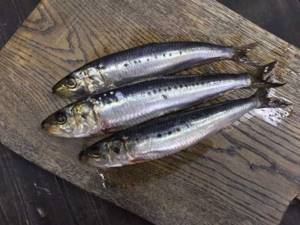
It cannot be said that ivashi is healthier than herring; moreover, they contain more carbohydrates, which excludes this product from the list of dietary products.

Is it possible for pregnant and lactating women to eat herring caviar?
Doctors recommend eating herring caviar, rich in useful elements, during pregnancy. Omega-3 helps in the formation and development of the skeleton and internal organs of the fetus. In addition, the acid promotes a better blood supply to the placenta, which makes childbirth easier.
Nursing mothers should not eat herring delicacy. Because of it, the taste of breast milk changes, which then becomes unpleasant for the baby. As a result, the child may refuse it. But caviar can be consumed baked or boiled.
Possible harm to the body
When consumed in large quantities, negative effects may occur:
- Water retention in the body due to high salt content.
- The strongest allergen.
- Infestation by parasites, which can cause serious illness.
- Excessive consumption can cause exacerbation of chronic diseases of the kidneys, liver, and stomach.
- Contraindicated in diabetes mellitus, gastritis, urolithiasis, kidney pathology, low liver function.
How to cook herring caviar and what it goes with
Healthy fish eggs can be consumed as an independent product without harm to health. They also go well with a potato side dish, rice, vegetables and are great for making sandwiches.
You can pickle caviar in this way:
- Release the product from the container.
- Pour 300 mg of water into the vessel and add 1 tbsp. l. salt.
- Add 1 tbsp. l. vegetable oil and a couple of bay leaves.
- Add caviar and mix gently.
- Place in a cool place for a day.
To make a paste for sandwiches, you need to mash the salted caviar with a fork, mix with softened butter, dill, salt and pepper. Place the mixture in a jar and cover with a lid. Place in the refrigerator. Can be eaten immediately after cooling.
Pickling recipes
Spiced herring
Ingredients:
- water – 1 liter;
- whole herring – 2 pieces;
- sugar – 7.5 grams (1.5 teaspoons);
- salt – 50 grams (4 dessert spoons);
- dried carnation flowers – 5 pieces;
- bay leaf – 4 pieces;
- allspice – 10 peas.
Cooking method
- Boil water in a saucepan, add spices, salt, sugar.
- Cool the brine, pour it over the fish, leave at room temperature for an hour, then put it in the refrigerator for 2 to 7 days.
- Before serving, cut into pieces, garnish with pickled onions and herbs.
Spicy herring with mustard
Ingredients:
- water – 900 milliliters;
- whole herring – 2 pieces;
- mustard – 30 grams (2 tablespoons);
- sugar – 45 grams (3 tablespoons);
- salt – 75 grams (5 tablespoons);
- chopped herbs (dill or parsley) – 15 grams (1 tablespoon);
- coriander seeds – 15 grams (1 tablespoon);
- bay leaf – 10 pieces;
- black pepper – 15 peas.
Rhode Island breed of chickens - description P 11, photos and videos
Cooking sequence:
- brush the fish with mustard and place in a glass container (enamel or plastic dishes will give the fish a metallic taste);
- boil water in a saucepan, add salt, sugar, spices;
- cool the brine, pour over the carcasses, leave the herring to marinate for 2 hours;
- put in a cool place for three days.
Fish in brine (strong salt solution)
This method of salting herring is recommended for use if the carcasses are whole without visible damage to the skin. Otherwise, the fish will draw too much salt through the scratches, which will affect its taste.
Method for preparing brine:
- Boil a liter of water, slowly add salt to the liquid until it stops dissolving. Visually, you will see that the crystals simply begin to settle to the bottom.
You can check the readiness of the brine using a raw egg: lower it into the water; if it starts to sink, this indicates an insufficient amount of salt in the water, and if it floats on the surface, the brine is ready.
- To improve the taste, add spices to the liquid, based on your own preferences. These can be: black, white, red ground or allspice, clove buds, bay leaves and juniper berries. Cardamom grains, coriander seeds, mustard seeds, vinegar, onions, horseradish, green sour apple, lemon juice, vodka, and soy sauce will not spoil the taste. However, it is not recommended to use iodized salt to prepare brine.
- Place two herring carcasses in a bowl, pour cooled brine over the fish so that it “swims” in the brine. Let it sit for an hour, then put it in the refrigerator for 1 – 2 days.
Dry pickling
Ingredients:
- large whole herring – 1 carcass;
- ground black pepper – 7.5 grams (1.5 teaspoons);
- sugar – 5 grams (1 teaspoon);
- salt – 7.5 grams (1.5 teaspoons).
Recipe:
- Wipe the fish dry with a paper towel or napkins;
- mix black pepper, salt, sugar in a glass container;
- thoroughly rub the fish carcass with the mixture on all sides, including the empty cavity under the gill covers;
- Wrap the herring tightly in three layers of cling film and place in the refrigerator for 2 days.
Express method of salting herring
For quick cooking, clean one fish, remove the insides, remove the skin, separate the fillet from the backbone, finely chop and place in a glass container. Then prepare the brine: dissolve 45 grams of table salt (3 tablespoons) in a liter of cold water. Pour it over the fish and wait an hour and a half. Drain the brine and make a new one: mix 250 milliliters of cold water with 15 milliliters of 9% vinegar. Pour it over the herring for 5 minutes. Drain the brine. Cut the onion into half rings, add to the fish, stir. Pour vegetable oil over the herring and leave for 25 minutes. The fish is ready to eat.
In addition to salting, herring can be fried. In home cooking, this is not a very popular dish, but in vain, since the fish turns out to be nutritious and tasty.
Cooking method:
- Peel the herring, gut it, cut into pieces;
- provide the fish with salt and spices, leave for half an hour;
- beat the egg, add flour;
- put the frying pan on the fire, add vegetable oil;
- Bread each piece of herring in egg and flour, fry until cooked on both sides;
- Place on a napkin to drain excess fat.
Fried fish is recommended to be served with fresh vegetables.
Remember, when exposed to air, herring fat oxidizes under the influence of oxygen, which leads to the appearance of a rancid taste, unpleasant odor and “rusty” color. Cut fish is stored exclusively in vegetable oil, and whole fish is stored in brine or marinade.
High-quality salted herring has a pleasant aroma, elastic shiny carcass, red eyes, steel color with a bluish tint.
How to choose herring with caviar
When choosing a fresh product, you need to pay attention to the following points:
- The gills of the fish should be elastic, flexible and scarlet: you should not buy herring with gray gills;
- you need to choose a fish with a rounded mouth - this is a sign of a female;
- eyes should be light, transparent, but not cloudy;
- There should be no yellow stripes or spots on the scales.
It is recommended to buy chilled fish rather than frozen. In this case, its beneficial properties last longer.
From the history
Indeed, for many centuries, herring was considered the food of the poor due to its bitter taste. And only in the 14th century, thanks to a simple Dutch fisherman Willem Jacob Bakels, this fish, salted in barrels immediately after catching, conquered first Europe and later Russia with its excellent taste.
Then it was the turn of the caviar. There were so many herring in the ocean waters that when the time came for spawning, the coastal strip was cloudy with milk, and all the algae were covered with a layer of caviar.
Unlike Europeans and Russians, Asian peoples fell in love with such caviar (in combination with kelp), preparing tons of it.
Varieties
- Punched caviar (typical of European cuisine) is obtained by freeing the eggs from the film, rubbing them through a screen (special sieve) and salting according to a certain recipe (with the addition of marinade, oil, spices). Used for toppings, sandwiches, snacks.
- Kazunoko-komba (Japanese cuisine). The method of preparation is interesting: the Japanese collect fertilized eggs along with the algae on which spawning took place, season them with spices and salt them. The result is long, thick strips of still fresh, crispy caviar - the most respected and, according to the people of Japan, delicious delicacy. The cost reaches $80 per 1 kg.
- Dry, strongly salted caviar. Used to make sushi.
Taste qualities
Nutritionists say that herring caviar is very nutritious. It has a bright characteristic aroma. Its taste depends entirely on the way it was prepared. Caviar absorbs salt and spices very well.
The eggs are relatively small, they do not burst on the teeth, they crunch. Breakout caviar usually has a mushy consistency, it is viscous and salty. With the help of marinade, you can add sharpness, sourness, and spice to it.
Herring roe is denser and drier. The Japanese first pickle it in strong brine and then soak it in lightly salted brine. By the way, Far Eastern chefs assure that soaking in fresh water will only spoil the product - the salt will come out of the upper layers, and the deep ones will remain salty. That’s why they use brine for soaking.
Conclusion
Herring is the most common fish on the human table. It has excellent taste and, despite its simplicity, rightfully occupies a leading position in Asian backgammon cooking. You can eat not only sirloin, but also caviar and milk, which are rich in microelements, organic compounds, vitamins A, E, D.
Herring and by-products have a beneficial effect on the human body: they regulate blood pressure, trigger metabolic processes, participate in the formation of new dermal cells, and accelerate recovery after intense physical activity. In order not to harm your health, people who have problems with the digestive tract, blood vessels, liver and kidneys are recommended to pre-soak salted fish in cold tea (strong) or milk before eating.
